MIDDLE CLASS: ALFREDO DUFOUR'S UNANSWERED QUESTIONS
_VIGILGONZALES presented Clase media (Middle Class), a solo exhibition in Cusco featuring the work of Argentine artist Alfredo Dufour, born in the city of San Juan and living in Buenos Aires. The exhibition is accompanied by a text by Argentine artist and critic Alberto Passolini.

Trained in the juxtaposed areas of pictorial and drawing visual art and the pluri-practical contemporary art, Alfredo Dufour articulates an enlightening discourse at a cosmic level and without nomenclatures, making in the same gesture the diagnosis of the present time, from the always fresh perspective of the South of the South.
Middle class by Alberto Passolini.
In the early 1970s space probes were sent into the dark sky of the galaxy, containing two rectangular metal plates inscribed with the same symbolic message. Their purpose was to inform a possible extraterrestrial civilization about humanity and where it came from. This happened at a time when earthlings were excited about the idea of communicating with life in outer space and, at the same time, new spiritual practices were emerging that attempted to connect with the individual's own inner self.
That message, latent in the dreary emptiness of the universe, with no chance of returning to Earth, does not lose hope of being interpreted by the inhabitants of other worlds. Half a century later, we are still on the only planet in the Solar System that has superficial water, which generates clouds and rains, and without answers from some other world.
We are in an undetermined geographical point, in front of the representation of a landscape expressed with economy of means: celestial for the sky and green for the grass, distributed in twelve rectangles of equal size.
This generic place that makes us anonymous is populated by an aesthetic language that refers to the optimism of New Age posters, that countercultural movement popularized at the end of the last century that expels pessimism from its belief system.
The represented sky overflows its color towards the walls of the room where Alfredo Dufour places his questions.
Perhaps this series is his best attempt to assimilate himself to optimism, as a philosophical doctrine, which affirms that we live in the best of all possible worlds.
If this were so, he is shipwrecked in the glass half full as well as in the glass half empty. Its visual aphorisms are Trojan killjoys.
Unlike the cards carrying a universal message, these paintings do not share the hope of being deciphered: the images work according to the nature of their author and reach their goal without the will of occasional viewers (terrestrial or alien) intervening.
Dufour dismantles any intention of being enthusiastic, which leads us to suspect that, in another timeline, he may have been in charge of the calligraphy of the famous “Lasciate ogni speranza, voi ch'entrate” that Dante Alighieri saw at the entrance of hell.
Seduced by the spontaneity of his images, we will stop at each one of them. And we will carry them already with us like the tattoo we will regret every time a distracted glance is fixed on it.
Maybe that's the middle class.
-
Alfredo Dufour. Clase media, 2024. Acrylic on canvas. 50 x 70 cm (19.7 x 27.6 in)
-
Alfredo Dufour. Clase media, 2024. Acrylic on canvas. 50 x 70 cm (19.7 x 27.6 in)
-
Alfredo Dufour. Campo, 2024. Acrylic on canvas. 50 x 70 cm (19.7 x 27.6 in)
-
Alfredo Dufour. Mate, 2024. Acrylic on canvas. 70 x 50 cm (27.6 x 19.7 in)
-
Alfredo Dufour. Carne, 2024. Acrylic on canvas. 70 x 50 cm (27.6 x 19.7 in)
-
Alfredo Dufour. Tobi, 2024. Acrylic on canvas. 50 x 70 cm (19.7 x 27.6 in)
-
Alfredo Dufour. Aire, 2024. Acrylic on canvas. 50 x 70 cm (19.7 x 27.6 in)
-
Alfredo Dufour. Mood, 2024. Acrylic on canvas. 70 x 50 cm (27.6 x 19.7 in)
-
Alfredo Dufour. Ruta, 2024. Acrylic on canvas. 50 x 70 cm (19.7 x 27.6 in)
Clase media. Solo exhibition by Alfredo Dufour.
Until May 2024.
_VIGILGONZALES. Pampa del Castillo 455. Historic Center of Cusco, Peru.
May interest you
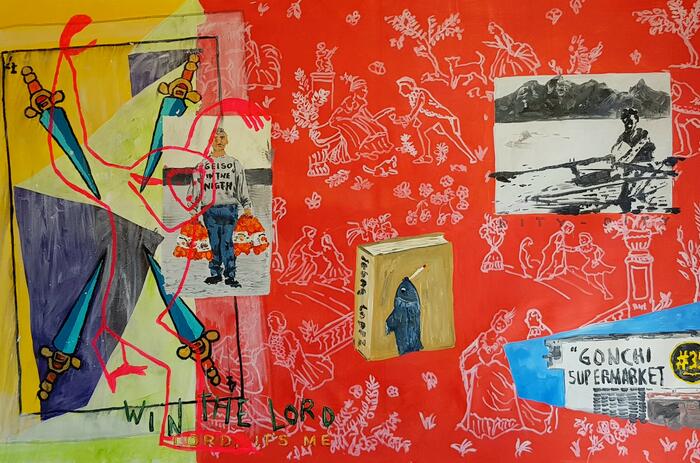
The eleventh edition of Pinta PArC –the official contemporary art fair in Peru– will be held from April 24 to 28. It is the most attractive international cultural event in the region, and a window to learn how Peru intertwines its rich history with the most current influences of contemporary art.
PINTA PArC: TRADITION AND PRESENT IN PERFECT SYNCHRONY
The eleventh edition of Pinta PArC –the official contemporary art fair in Peru– will be held from April 24 to 28. It is the most attractive international cultural event in the region, and a window to learn how Peru intertwines its rich history with the most current influences of contemporary art.

The eleventh edition of Pinta PArC –the official contemporary art fair in Peru– will be held from April 24 to 28. It is the most attractive international cultural event in the region, and a window to learn how Peru intertwines its rich history with the most current influences of contemporary art.
PINTA PArC: TRADITION AND PRESENT IN PERFECT SYNCHRONY
The eleventh edition of Pinta PArC –the official contemporary art fair in Peru– will be held from April 24 to 28. It is the most attractive international cultural event in the region, and a window to learn how Peru intertwines its rich history with the most current influences of contemporary art.
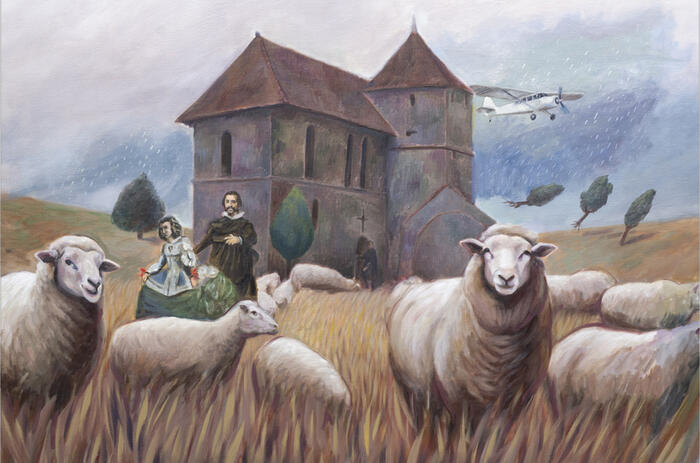
Mateo Cabrera presents at LA GALERÍA the exhibition La Comunión de los Reinos (The Communion of Kingdoms), with nine recent works of medium and large format in oil on canvas and a set of small format works in mixed media.
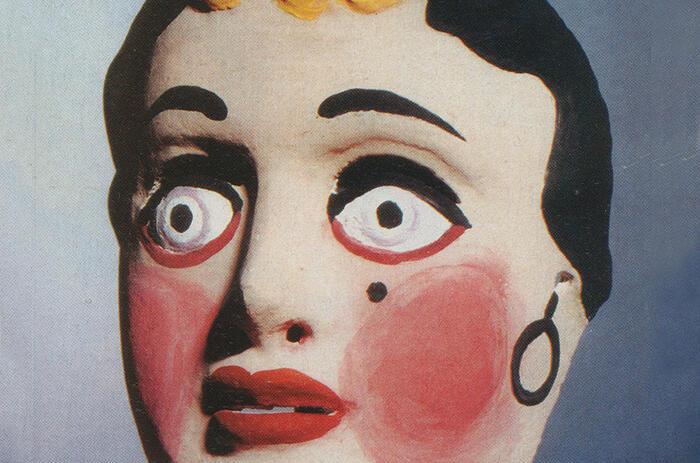
The NEXT section of Pinta PArC 2024 is set as a window to the Latin American emerging art scene, tracing a profound dialogue between diverse artistic systems and a dynamic collaboration with six galleries: Vigil Gonzales (Cusco and Buenos Aires), Salón Comunal (Bogotá), Enhorabuena Espacio (Madrid), Remota (Salta), Constitución (Buenos Aires) and Paseolab / Galería del Paseo (Lima and Punta del Este).
NEXT: VIBRANT PLATFORM AND TERRITORY FOR DIALOGUE
The NEXT section of Pinta PArC 2024 is set as a window to the Latin American emerging art scene, tracing a profound dialogue between diverse artistic systems and a dynamic collaboration with six galleries: Vigil Gonzales (Cusco and Buenos Aires), Salón Comunal (Bogotá), Enhorabuena Espacio (Madrid), Remota (Salta), Constitución (Buenos Aires) and Paseolab / Galería del Paseo (Lima and Punta del Este).
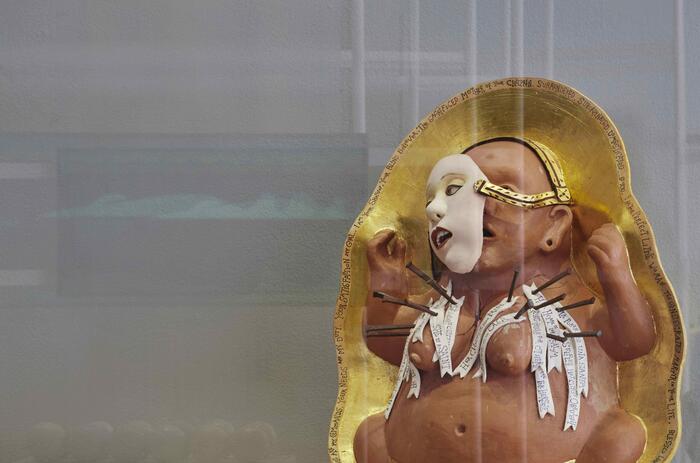
The Collection of the Museo de Arte Contemporáneo de Lima brings together works by Peruvian and international artists created since 1940 in media ranging from painting, sculpture and installation to photography and video. The exhibition is curated by Patricia Pajuelo, Giuliana Vidarte, Iosu Aramburu and Nicolás Gómez Echeverri.
MAC LIMA COLLECTION: RESEARCH, CONSERVATION AND EXHIBITION
The Collection of the Museo de Arte Contemporáneo de Lima brings together works by Peruvian and international artists created since 1940 in media ranging from painting, sculpture and installation to photography and video. The exhibition is curated by Patricia Pajuelo, Giuliana Vidarte, Iosu Aramburu and Nicolás Gómez Echeverri.
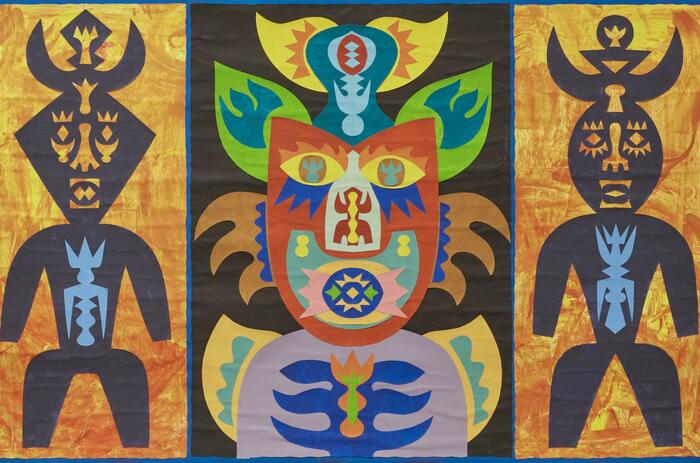
In the next edition of Pinta PArC 2024, Herlitzka & Co. (Buenos Aires) and Henrique Faria (New York) join forces to present a booth proposal that challenges conventional notions of contemporaneity and ancestry in Latin American art.
TURNING THE MEANINGS OF OUR CONTINENT UPSIDE DOWN: HERLITZKA & CO. + HENRIQUE FARIA AT PINTA PArC
In the next edition of Pinta PArC 2024, Herlitzka & Co. (Buenos Aires) and Henrique Faria (New York) join forces to present a booth proposal that challenges conventional notions of contemporaneity and ancestry in Latin American art.
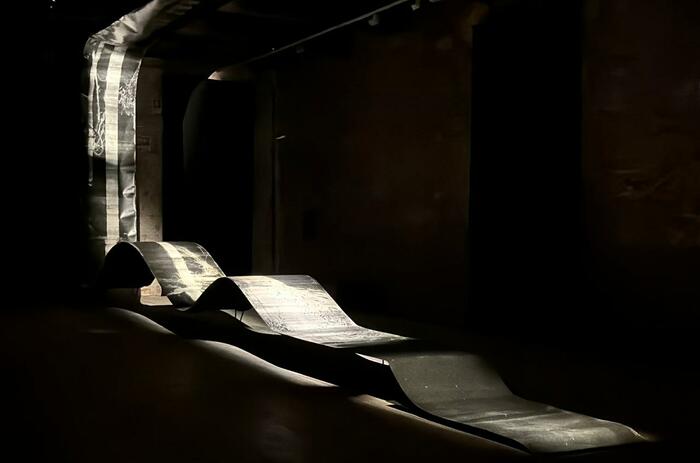
Peruvian photographer Roberto Huarcaya will represent his country at the Venice Biennale 2024 with his project Cosmic Traces.
COSMIC TRACES: ROBERTO HUARCAYA AT THE VENICE BIENNALE
Peruvian photographer Roberto Huarcaya will represent his country at the Venice Biennale 2024 with his project Cosmic Traces.
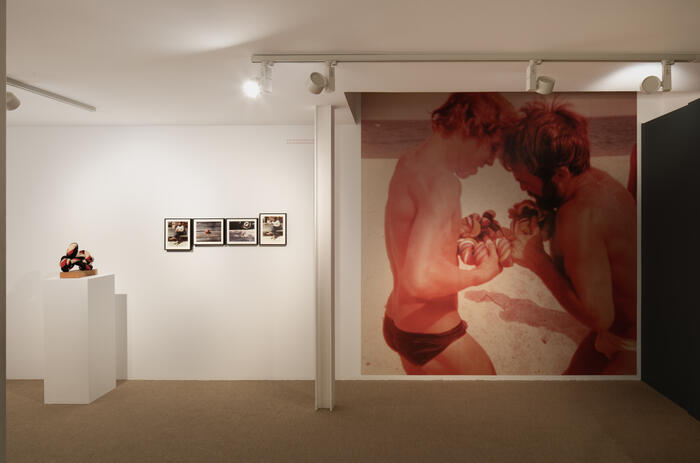
The vindication of the Peruvian Jorge Eduardo Eielson (Lima, Peru, 1924) looks fundamental, far beyond any framed motivation in the round figures of the anniversaries. However, the work being done around the centenary of his birth shows a titanic effort to explore one of the most versatile artists in the plastic arts and, perhaps in his best-known aspect, in the literature of contemporary Peru.
JORGE EIELSON, THE LAST QUIPUCAMAYOC
The vindication of the Peruvian Jorge Eduardo Eielson (Lima, Peru, 1924) looks fundamental, far beyond any framed motivation in the round figures of the anniversaries. However, the work being done around the centenary of his birth shows a titanic effort to explore one of the most versatile artists in the plastic arts and, perhaps in his best-known aspect, in the literature of contemporary Peru.
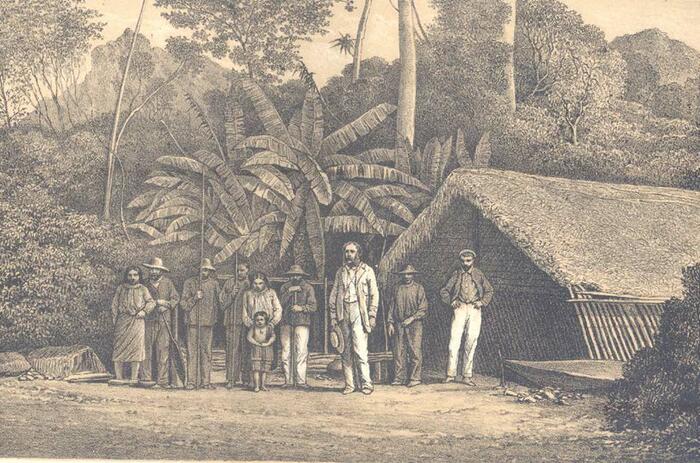
Museo del grabado ICPNA presents Antonio Raimondi and the official representation of nature in republican Peru, curated by Luis Felipe Villacorta.
ANTONIO RAIMONDI AND THE REPRESENTATION OF NATURE IN PERU
Museo del grabado ICPNA presents Antonio Raimondi and the official representation of nature in republican Peru, curated by Luis Felipe Villacorta.
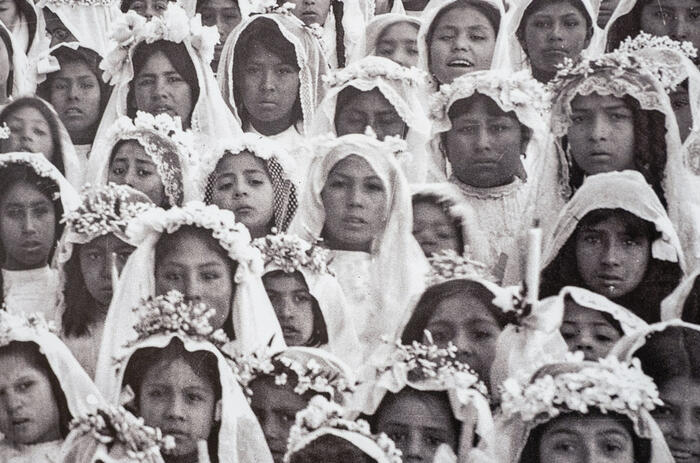
Casa de América inaugurated two exhibitions of Peruvian art: Memoria del Perú. Photographs 1890-1950, with works by various photographers that capture a significant period in the country's history, and Shipibo-Konibo. Portraits of my blood, with photographs by artist David Diaz on the life of the Shipibo-Konibo.
TWO EXHIBITIONS OF PERUVIAN PHOTOGRAPHY AT CASA DE AMERICA
Casa de América inaugurated two exhibitions of Peruvian art: Memoria del Perú. Photographs 1890-1950, with works by various photographers that capture a significant period in the country's history, and Shipibo-Konibo. Portraits of my blood, with photographs by artist David Diaz on the life of the Shipibo-Konibo.
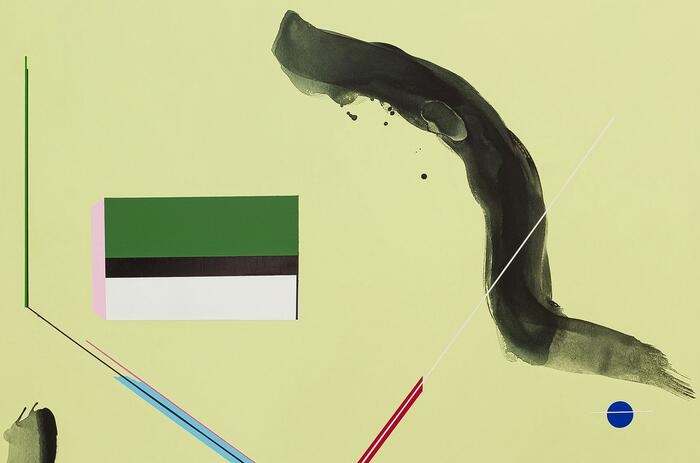
The geometry in Jorge Cabieses' (Lima, Peru, 1971) usual outline is broken with the action of the spontaneity of the curved and almost organic stroke in his second solo exhibition in the Spanish capital. The Lima-born artist thus proposes, in a certain way, a dialogue between the artificial of the synthetic and the atavistic through the incorporation of those more spontaneous brushstrokes over the usual framework of rectitude that the artist usually presents.
CABIESES’ INTERCEPTED IMAGE
The geometry in Jorge Cabieses' (Lima, Peru, 1971) usual outline is broken with the action of the spontaneity of the curved and almost organic stroke in his second solo exhibition in the Spanish capital. The Lima-born artist thus proposes, in a certain way, a dialogue between the artificial of the synthetic and the atavistic through the incorporation of those more spontaneous brushstrokes over the usual framework of rectitude that the artist usually presents.

The eleventh edition of Pinta PArC –the official contemporary art fair in Peru– will be held from April 24 to 28. It is the most attractive international cultural event in the region, and a window to learn how Peru intertwines its rich history with the most current influences of contemporary art.
PINTA PArC: TRADITION AND PRESENT IN PERFECT SYNCHRONY
The eleventh edition of Pinta PArC –the official contemporary art fair in Peru– will be held from April 24 to 28. It is the most attractive international cultural event in the region, and a window to learn how Peru intertwines its rich history with the most current influences of contemporary art.

Mateo Cabrera presents at LA GALERÍA the exhibition La Comunión de los Reinos (The Communion of Kingdoms), with nine recent works of medium and large format in oil on canvas and a set of small format works in mixed media.

The NEXT section of Pinta PArC 2024 is set as a window to the Latin American emerging art scene, tracing a profound dialogue between diverse artistic systems and a dynamic collaboration with six galleries: Vigil Gonzales (Cusco and Buenos Aires), Salón Comunal (Bogotá), Enhorabuena Espacio (Madrid), Remota (Salta), Constitución (Buenos Aires) and Paseolab / Galería del Paseo (Lima and Punta del Este).
NEXT: VIBRANT PLATFORM AND TERRITORY FOR DIALOGUE
The NEXT section of Pinta PArC 2024 is set as a window to the Latin American emerging art scene, tracing a profound dialogue between diverse artistic systems and a dynamic collaboration with six galleries: Vigil Gonzales (Cusco and Buenos Aires), Salón Comunal (Bogotá), Enhorabuena Espacio (Madrid), Remota (Salta), Constitución (Buenos Aires) and Paseolab / Galería del Paseo (Lima and Punta del Este).

The Collection of the Museo de Arte Contemporáneo de Lima brings together works by Peruvian and international artists created since 1940 in media ranging from painting, sculpture and installation to photography and video. The exhibition is curated by Patricia Pajuelo, Giuliana Vidarte, Iosu Aramburu and Nicolás Gómez Echeverri.
MAC LIMA COLLECTION: RESEARCH, CONSERVATION AND EXHIBITION
The Collection of the Museo de Arte Contemporáneo de Lima brings together works by Peruvian and international artists created since 1940 in media ranging from painting, sculpture and installation to photography and video. The exhibition is curated by Patricia Pajuelo, Giuliana Vidarte, Iosu Aramburu and Nicolás Gómez Echeverri.

In the next edition of Pinta PArC 2024, Herlitzka & Co. (Buenos Aires) and Henrique Faria (New York) join forces to present a booth proposal that challenges conventional notions of contemporaneity and ancestry in Latin American art.
TURNING THE MEANINGS OF OUR CONTINENT UPSIDE DOWN: HERLITZKA & CO. + HENRIQUE FARIA AT PINTA PArC
In the next edition of Pinta PArC 2024, Herlitzka & Co. (Buenos Aires) and Henrique Faria (New York) join forces to present a booth proposal that challenges conventional notions of contemporaneity and ancestry in Latin American art.

Peruvian photographer Roberto Huarcaya will represent his country at the Venice Biennale 2024 with his project Cosmic Traces.
COSMIC TRACES: ROBERTO HUARCAYA AT THE VENICE BIENNALE
Peruvian photographer Roberto Huarcaya will represent his country at the Venice Biennale 2024 with his project Cosmic Traces.

The vindication of the Peruvian Jorge Eduardo Eielson (Lima, Peru, 1924) looks fundamental, far beyond any framed motivation in the round figures of the anniversaries. However, the work being done around the centenary of his birth shows a titanic effort to explore one of the most versatile artists in the plastic arts and, perhaps in his best-known aspect, in the literature of contemporary Peru.
JORGE EIELSON, THE LAST QUIPUCAMAYOC
The vindication of the Peruvian Jorge Eduardo Eielson (Lima, Peru, 1924) looks fundamental, far beyond any framed motivation in the round figures of the anniversaries. However, the work being done around the centenary of his birth shows a titanic effort to explore one of the most versatile artists in the plastic arts and, perhaps in his best-known aspect, in the literature of contemporary Peru.

Museo del grabado ICPNA presents Antonio Raimondi and the official representation of nature in republican Peru, curated by Luis Felipe Villacorta.
ANTONIO RAIMONDI AND THE REPRESENTATION OF NATURE IN PERU
Museo del grabado ICPNA presents Antonio Raimondi and the official representation of nature in republican Peru, curated by Luis Felipe Villacorta.

Casa de América inaugurated two exhibitions of Peruvian art: Memoria del Perú. Photographs 1890-1950, with works by various photographers that capture a significant period in the country's history, and Shipibo-Konibo. Portraits of my blood, with photographs by artist David Diaz on the life of the Shipibo-Konibo.
TWO EXHIBITIONS OF PERUVIAN PHOTOGRAPHY AT CASA DE AMERICA
Casa de América inaugurated two exhibitions of Peruvian art: Memoria del Perú. Photographs 1890-1950, with works by various photographers that capture a significant period in the country's history, and Shipibo-Konibo. Portraits of my blood, with photographs by artist David Diaz on the life of the Shipibo-Konibo.

The geometry in Jorge Cabieses' (Lima, Peru, 1971) usual outline is broken with the action of the spontaneity of the curved and almost organic stroke in his second solo exhibition in the Spanish capital. The Lima-born artist thus proposes, in a certain way, a dialogue between the artificial of the synthetic and the atavistic through the incorporation of those more spontaneous brushstrokes over the usual framework of rectitude that the artist usually presents.
CABIESES’ INTERCEPTED IMAGE
The geometry in Jorge Cabieses' (Lima, Peru, 1971) usual outline is broken with the action of the spontaneity of the curved and almost organic stroke in his second solo exhibition in the Spanish capital. The Lima-born artist thus proposes, in a certain way, a dialogue between the artificial of the synthetic and the atavistic through the incorporation of those more spontaneous brushstrokes over the usual framework of rectitude that the artist usually presents.

The eleventh edition of Pinta PArC –the official contemporary art fair in Peru– will be held from April 24 to 28. It is the most attractive international cultural event in the region, and a window to learn how Peru intertwines its rich history with the most current influences of contemporary art.
PINTA PArC: TRADITION AND PRESENT IN PERFECT SYNCHRONY
The eleventh edition of Pinta PArC –the official contemporary art fair in Peru– will be held from April 24 to 28. It is the most attractive international cultural event in the region, and a window to learn how Peru intertwines its rich history with the most current influences of contemporary art.

Mateo Cabrera presents at LA GALERÍA the exhibition La Comunión de los Reinos (The Communion of Kingdoms), with nine recent works of medium and large format in oil on canvas and a set of small format works in mixed media.

The NEXT section of Pinta PArC 2024 is set as a window to the Latin American emerging art scene, tracing a profound dialogue between diverse artistic systems and a dynamic collaboration with six galleries: Vigil Gonzales (Cusco and Buenos Aires), Salón Comunal (Bogotá), Enhorabuena Espacio (Madrid), Remota (Salta), Constitución (Buenos Aires) and Paseolab / Galería del Paseo (Lima and Punta del Este).
NEXT: VIBRANT PLATFORM AND TERRITORY FOR DIALOGUE
The NEXT section of Pinta PArC 2024 is set as a window to the Latin American emerging art scene, tracing a profound dialogue between diverse artistic systems and a dynamic collaboration with six galleries: Vigil Gonzales (Cusco and Buenos Aires), Salón Comunal (Bogotá), Enhorabuena Espacio (Madrid), Remota (Salta), Constitución (Buenos Aires) and Paseolab / Galería del Paseo (Lima and Punta del Este).

The Collection of the Museo de Arte Contemporáneo de Lima brings together works by Peruvian and international artists created since 1940 in media ranging from painting, sculpture and installation to photography and video. The exhibition is curated by Patricia Pajuelo, Giuliana Vidarte, Iosu Aramburu and Nicolás Gómez Echeverri.
MAC LIMA COLLECTION: RESEARCH, CONSERVATION AND EXHIBITION
The Collection of the Museo de Arte Contemporáneo de Lima brings together works by Peruvian and international artists created since 1940 in media ranging from painting, sculpture and installation to photography and video. The exhibition is curated by Patricia Pajuelo, Giuliana Vidarte, Iosu Aramburu and Nicolás Gómez Echeverri.

In the next edition of Pinta PArC 2024, Herlitzka & Co. (Buenos Aires) and Henrique Faria (New York) join forces to present a booth proposal that challenges conventional notions of contemporaneity and ancestry in Latin American art.
TURNING THE MEANINGS OF OUR CONTINENT UPSIDE DOWN: HERLITZKA & CO. + HENRIQUE FARIA AT PINTA PArC
In the next edition of Pinta PArC 2024, Herlitzka & Co. (Buenos Aires) and Henrique Faria (New York) join forces to present a booth proposal that challenges conventional notions of contemporaneity and ancestry in Latin American art.

Peruvian photographer Roberto Huarcaya will represent his country at the Venice Biennale 2024 with his project Cosmic Traces.
COSMIC TRACES: ROBERTO HUARCAYA AT THE VENICE BIENNALE
Peruvian photographer Roberto Huarcaya will represent his country at the Venice Biennale 2024 with his project Cosmic Traces.

The vindication of the Peruvian Jorge Eduardo Eielson (Lima, Peru, 1924) looks fundamental, far beyond any framed motivation in the round figures of the anniversaries. However, the work being done around the centenary of his birth shows a titanic effort to explore one of the most versatile artists in the plastic arts and, perhaps in his best-known aspect, in the literature of contemporary Peru.
JORGE EIELSON, THE LAST QUIPUCAMAYOC
The vindication of the Peruvian Jorge Eduardo Eielson (Lima, Peru, 1924) looks fundamental, far beyond any framed motivation in the round figures of the anniversaries. However, the work being done around the centenary of his birth shows a titanic effort to explore one of the most versatile artists in the plastic arts and, perhaps in his best-known aspect, in the literature of contemporary Peru.

Museo del grabado ICPNA presents Antonio Raimondi and the official representation of nature in republican Peru, curated by Luis Felipe Villacorta.
ANTONIO RAIMONDI AND THE REPRESENTATION OF NATURE IN PERU
Museo del grabado ICPNA presents Antonio Raimondi and the official representation of nature in republican Peru, curated by Luis Felipe Villacorta.

Casa de América inaugurated two exhibitions of Peruvian art: Memoria del Perú. Photographs 1890-1950, with works by various photographers that capture a significant period in the country's history, and Shipibo-Konibo. Portraits of my blood, with photographs by artist David Diaz on the life of the Shipibo-Konibo.
TWO EXHIBITIONS OF PERUVIAN PHOTOGRAPHY AT CASA DE AMERICA
Casa de América inaugurated two exhibitions of Peruvian art: Memoria del Perú. Photographs 1890-1950, with works by various photographers that capture a significant period in the country's history, and Shipibo-Konibo. Portraits of my blood, with photographs by artist David Diaz on the life of the Shipibo-Konibo.

The geometry in Jorge Cabieses' (Lima, Peru, 1971) usual outline is broken with the action of the spontaneity of the curved and almost organic stroke in his second solo exhibition in the Spanish capital. The Lima-born artist thus proposes, in a certain way, a dialogue between the artificial of the synthetic and the atavistic through the incorporation of those more spontaneous brushstrokes over the usual framework of rectitude that the artist usually presents.
CABIESES’ INTERCEPTED IMAGE
The geometry in Jorge Cabieses' (Lima, Peru, 1971) usual outline is broken with the action of the spontaneity of the curved and almost organic stroke in his second solo exhibition in the Spanish capital. The Lima-born artist thus proposes, in a certain way, a dialogue between the artificial of the synthetic and the atavistic through the incorporation of those more spontaneous brushstrokes over the usual framework of rectitude that the artist usually presents.

The eleventh edition of Pinta PArC –the official contemporary art fair in Peru– will be held from April 24 to 28. It is the most attractive international cultural event in the region, and a window to learn how Peru intertwines its rich history with the most current influences of contemporary art.
PINTA PArC: TRADITION AND PRESENT IN PERFECT SYNCHRONY
The eleventh edition of Pinta PArC –the official contemporary art fair in Peru– will be held from April 24 to 28. It is the most attractive international cultural event in the region, and a window to learn how Peru intertwines its rich history with the most current influences of contemporary art.

Mateo Cabrera presents at LA GALERÍA the exhibition La Comunión de los Reinos (The Communion of Kingdoms), with nine recent works of medium and large format in oil on canvas and a set of small format works in mixed media.

The NEXT section of Pinta PArC 2024 is set as a window to the Latin American emerging art scene, tracing a profound dialogue between diverse artistic systems and a dynamic collaboration with six galleries: Vigil Gonzales (Cusco and Buenos Aires), Salón Comunal (Bogotá), Enhorabuena Espacio (Madrid), Remota (Salta), Constitución (Buenos Aires) and Paseolab / Galería del Paseo (Lima and Punta del Este).
NEXT: VIBRANT PLATFORM AND TERRITORY FOR DIALOGUE
The NEXT section of Pinta PArC 2024 is set as a window to the Latin American emerging art scene, tracing a profound dialogue between diverse artistic systems and a dynamic collaboration with six galleries: Vigil Gonzales (Cusco and Buenos Aires), Salón Comunal (Bogotá), Enhorabuena Espacio (Madrid), Remota (Salta), Constitución (Buenos Aires) and Paseolab / Galería del Paseo (Lima and Punta del Este).

The Collection of the Museo de Arte Contemporáneo de Lima brings together works by Peruvian and international artists created since 1940 in media ranging from painting, sculpture and installation to photography and video. The exhibition is curated by Patricia Pajuelo, Giuliana Vidarte, Iosu Aramburu and Nicolás Gómez Echeverri.
MAC LIMA COLLECTION: RESEARCH, CONSERVATION AND EXHIBITION
The Collection of the Museo de Arte Contemporáneo de Lima brings together works by Peruvian and international artists created since 1940 in media ranging from painting, sculpture and installation to photography and video. The exhibition is curated by Patricia Pajuelo, Giuliana Vidarte, Iosu Aramburu and Nicolás Gómez Echeverri.

In the next edition of Pinta PArC 2024, Herlitzka & Co. (Buenos Aires) and Henrique Faria (New York) join forces to present a booth proposal that challenges conventional notions of contemporaneity and ancestry in Latin American art.
TURNING THE MEANINGS OF OUR CONTINENT UPSIDE DOWN: HERLITZKA & CO. + HENRIQUE FARIA AT PINTA PArC
In the next edition of Pinta PArC 2024, Herlitzka & Co. (Buenos Aires) and Henrique Faria (New York) join forces to present a booth proposal that challenges conventional notions of contemporaneity and ancestry in Latin American art.

Peruvian photographer Roberto Huarcaya will represent his country at the Venice Biennale 2024 with his project Cosmic Traces.
COSMIC TRACES: ROBERTO HUARCAYA AT THE VENICE BIENNALE
Peruvian photographer Roberto Huarcaya will represent his country at the Venice Biennale 2024 with his project Cosmic Traces.

The vindication of the Peruvian Jorge Eduardo Eielson (Lima, Peru, 1924) looks fundamental, far beyond any framed motivation in the round figures of the anniversaries. However, the work being done around the centenary of his birth shows a titanic effort to explore one of the most versatile artists in the plastic arts and, perhaps in his best-known aspect, in the literature of contemporary Peru.
JORGE EIELSON, THE LAST QUIPUCAMAYOC
The vindication of the Peruvian Jorge Eduardo Eielson (Lima, Peru, 1924) looks fundamental, far beyond any framed motivation in the round figures of the anniversaries. However, the work being done around the centenary of his birth shows a titanic effort to explore one of the most versatile artists in the plastic arts and, perhaps in his best-known aspect, in the literature of contemporary Peru.

Museo del grabado ICPNA presents Antonio Raimondi and the official representation of nature in republican Peru, curated by Luis Felipe Villacorta.
ANTONIO RAIMONDI AND THE REPRESENTATION OF NATURE IN PERU
Museo del grabado ICPNA presents Antonio Raimondi and the official representation of nature in republican Peru, curated by Luis Felipe Villacorta.

Casa de América inaugurated two exhibitions of Peruvian art: Memoria del Perú. Photographs 1890-1950, with works by various photographers that capture a significant period in the country's history, and Shipibo-Konibo. Portraits of my blood, with photographs by artist David Diaz on the life of the Shipibo-Konibo.
TWO EXHIBITIONS OF PERUVIAN PHOTOGRAPHY AT CASA DE AMERICA
Casa de América inaugurated two exhibitions of Peruvian art: Memoria del Perú. Photographs 1890-1950, with works by various photographers that capture a significant period in the country's history, and Shipibo-Konibo. Portraits of my blood, with photographs by artist David Diaz on the life of the Shipibo-Konibo.

The geometry in Jorge Cabieses' (Lima, Peru, 1971) usual outline is broken with the action of the spontaneity of the curved and almost organic stroke in his second solo exhibition in the Spanish capital. The Lima-born artist thus proposes, in a certain way, a dialogue between the artificial of the synthetic and the atavistic through the incorporation of those more spontaneous brushstrokes over the usual framework of rectitude that the artist usually presents.
CABIESES’ INTERCEPTED IMAGE
The geometry in Jorge Cabieses' (Lima, Peru, 1971) usual outline is broken with the action of the spontaneity of the curved and almost organic stroke in his second solo exhibition in the Spanish capital. The Lima-born artist thus proposes, in a certain way, a dialogue between the artificial of the synthetic and the atavistic through the incorporation of those more spontaneous brushstrokes over the usual framework of rectitude that the artist usually presents.

The eleventh edition of Pinta PArC –the official contemporary art fair in Peru– will be held from April 24 to 28. It is the most attractive international cultural event in the region, and a window to learn how Peru intertwines its rich history with the most current influences of contemporary art.
PINTA PArC: TRADITION AND PRESENT IN PERFECT SYNCHRONY
The eleventh edition of Pinta PArC –the official contemporary art fair in Peru– will be held from April 24 to 28. It is the most attractive international cultural event in the region, and a window to learn how Peru intertwines its rich history with the most current influences of contemporary art.

Mateo Cabrera presents at LA GALERÍA the exhibition La Comunión de los Reinos (The Communion of Kingdoms), with nine recent works of medium and large format in oil on canvas and a set of small format works in mixed media.

The NEXT section of Pinta PArC 2024 is set as a window to the Latin American emerging art scene, tracing a profound dialogue between diverse artistic systems and a dynamic collaboration with six galleries: Vigil Gonzales (Cusco and Buenos Aires), Salón Comunal (Bogotá), Enhorabuena Espacio (Madrid), Remota (Salta), Constitución (Buenos Aires) and Paseolab / Galería del Paseo (Lima and Punta del Este).
NEXT: VIBRANT PLATFORM AND TERRITORY FOR DIALOGUE
The NEXT section of Pinta PArC 2024 is set as a window to the Latin American emerging art scene, tracing a profound dialogue between diverse artistic systems and a dynamic collaboration with six galleries: Vigil Gonzales (Cusco and Buenos Aires), Salón Comunal (Bogotá), Enhorabuena Espacio (Madrid), Remota (Salta), Constitución (Buenos Aires) and Paseolab / Galería del Paseo (Lima and Punta del Este).

The Collection of the Museo de Arte Contemporáneo de Lima brings together works by Peruvian and international artists created since 1940 in media ranging from painting, sculpture and installation to photography and video. The exhibition is curated by Patricia Pajuelo, Giuliana Vidarte, Iosu Aramburu and Nicolás Gómez Echeverri.
MAC LIMA COLLECTION: RESEARCH, CONSERVATION AND EXHIBITION
The Collection of the Museo de Arte Contemporáneo de Lima brings together works by Peruvian and international artists created since 1940 in media ranging from painting, sculpture and installation to photography and video. The exhibition is curated by Patricia Pajuelo, Giuliana Vidarte, Iosu Aramburu and Nicolás Gómez Echeverri.

In the next edition of Pinta PArC 2024, Herlitzka & Co. (Buenos Aires) and Henrique Faria (New York) join forces to present a booth proposal that challenges conventional notions of contemporaneity and ancestry in Latin American art.
TURNING THE MEANINGS OF OUR CONTINENT UPSIDE DOWN: HERLITZKA & CO. + HENRIQUE FARIA AT PINTA PArC
In the next edition of Pinta PArC 2024, Herlitzka & Co. (Buenos Aires) and Henrique Faria (New York) join forces to present a booth proposal that challenges conventional notions of contemporaneity and ancestry in Latin American art.

Peruvian photographer Roberto Huarcaya will represent his country at the Venice Biennale 2024 with his project Cosmic Traces.
COSMIC TRACES: ROBERTO HUARCAYA AT THE VENICE BIENNALE
Peruvian photographer Roberto Huarcaya will represent his country at the Venice Biennale 2024 with his project Cosmic Traces.

The vindication of the Peruvian Jorge Eduardo Eielson (Lima, Peru, 1924) looks fundamental, far beyond any framed motivation in the round figures of the anniversaries. However, the work being done around the centenary of his birth shows a titanic effort to explore one of the most versatile artists in the plastic arts and, perhaps in his best-known aspect, in the literature of contemporary Peru.
JORGE EIELSON, THE LAST QUIPUCAMAYOC
The vindication of the Peruvian Jorge Eduardo Eielson (Lima, Peru, 1924) looks fundamental, far beyond any framed motivation in the round figures of the anniversaries. However, the work being done around the centenary of his birth shows a titanic effort to explore one of the most versatile artists in the plastic arts and, perhaps in his best-known aspect, in the literature of contemporary Peru.

Museo del grabado ICPNA presents Antonio Raimondi and the official representation of nature in republican Peru, curated by Luis Felipe Villacorta.
ANTONIO RAIMONDI AND THE REPRESENTATION OF NATURE IN PERU
Museo del grabado ICPNA presents Antonio Raimondi and the official representation of nature in republican Peru, curated by Luis Felipe Villacorta.

Casa de América inaugurated two exhibitions of Peruvian art: Memoria del Perú. Photographs 1890-1950, with works by various photographers that capture a significant period in the country's history, and Shipibo-Konibo. Portraits of my blood, with photographs by artist David Diaz on the life of the Shipibo-Konibo.
TWO EXHIBITIONS OF PERUVIAN PHOTOGRAPHY AT CASA DE AMERICA
Casa de América inaugurated two exhibitions of Peruvian art: Memoria del Perú. Photographs 1890-1950, with works by various photographers that capture a significant period in the country's history, and Shipibo-Konibo. Portraits of my blood, with photographs by artist David Diaz on the life of the Shipibo-Konibo.

The geometry in Jorge Cabieses' (Lima, Peru, 1971) usual outline is broken with the action of the spontaneity of the curved and almost organic stroke in his second solo exhibition in the Spanish capital. The Lima-born artist thus proposes, in a certain way, a dialogue between the artificial of the synthetic and the atavistic through the incorporation of those more spontaneous brushstrokes over the usual framework of rectitude that the artist usually presents.
CABIESES’ INTERCEPTED IMAGE
The geometry in Jorge Cabieses' (Lima, Peru, 1971) usual outline is broken with the action of the spontaneity of the curved and almost organic stroke in his second solo exhibition in the Spanish capital. The Lima-born artist thus proposes, in a certain way, a dialogue between the artificial of the synthetic and the atavistic through the incorporation of those more spontaneous brushstrokes over the usual framework of rectitude that the artist usually presents.




